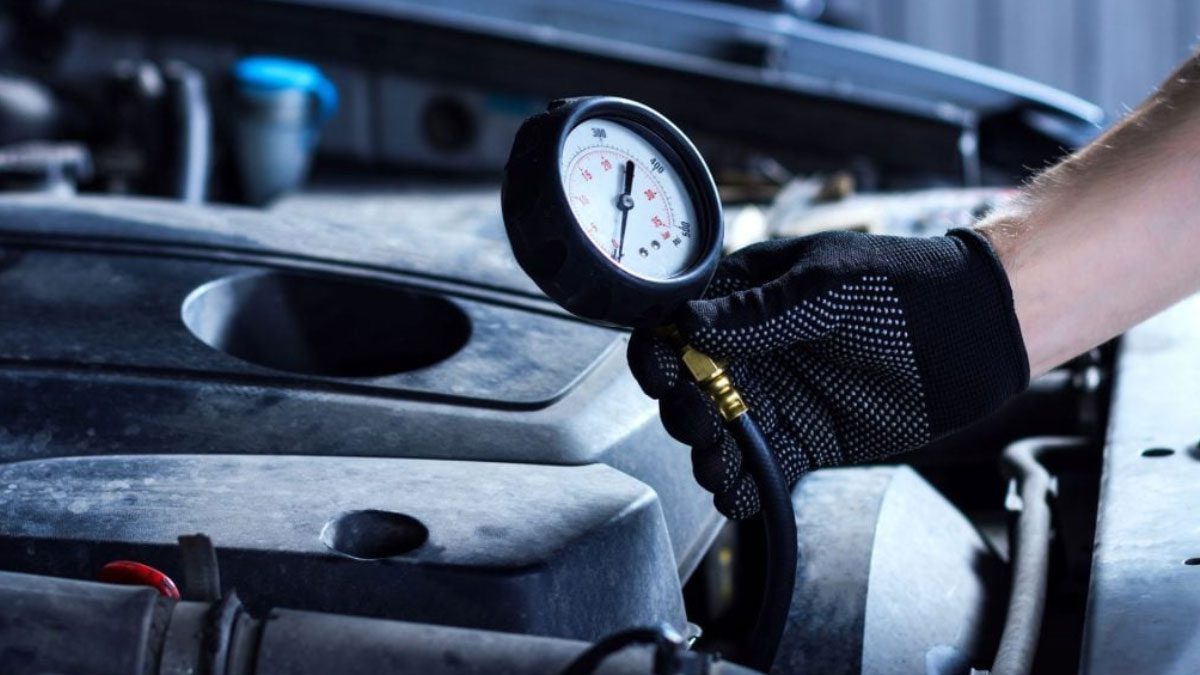How To Check Oil Pressure With and Without Gauge: Importance of Oil Pressure in the Engine
Ensuring the right oil pressure for your vehicle’s engine is vital. To ensure the right oil pressure, you must keep reading the oil pressure regularly. You can check oil pressure with and without a gauge.
Find the engine’s oil pressure sensor, unplug it, and connect a gauge to it. Turn the key in the ignition and take a reading. Vehicle-specific ideal pressure ranges from around 20 to 60 psi at normal operating temperatures. If you don’t have a pressure gauge, you should listen to banging sounds coming from the engine. Checking oil pressure with the dipstick is another way.
By diving deeper into this topic, we can appreciate oil’s nuanced role in keeping our vehicles running smoothly and efficiently.
Importance of Checking Oil Pressure
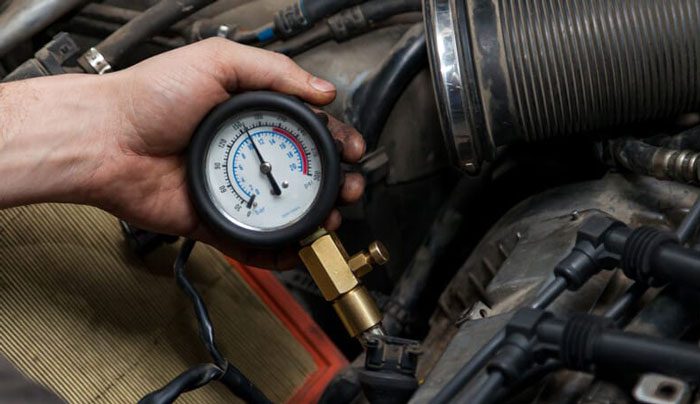
Let’s find out why low oil pressure is a concern for you.
The Scary Side of Low Oil Pressure
Oil is very important in keeping things running smoothly. Parts can rub together and wear out faster if the oil isn’t flowing right. Over time, that can mean big, expensive problems for your engine. It’s kind of like not drinking enough water on a hot day – things just start to shut down.
Is Your Car Trying to Tell You Something?
How can you tell if you’ve got an oil pressure issue? Here are a couple of things to keep an eye out for:
- Knocking Sounds: Your car’s noise is a need for help, indicating potential parts grinding due to insufficient oil.
- Warning Lights: When the oil pressure warning light on your car’s dashboard comes on, it is an indication of an oil pressure issue. You need to check the oil pressure immediately.”
How to Check Oil Pressure Using a Gauge?
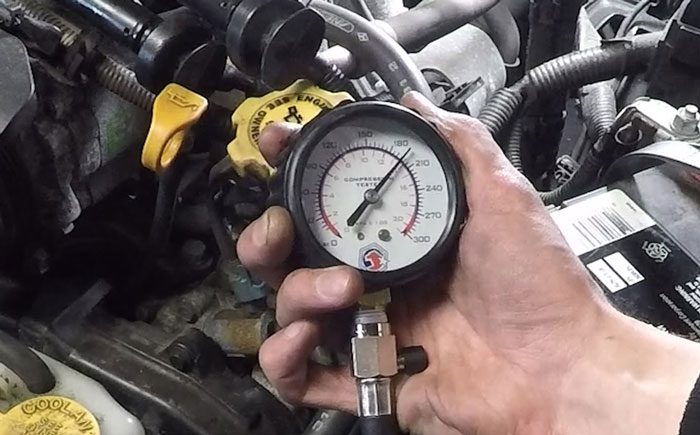
If you have an oil pressure gauge in your car, you can easily check the oil pressure. To do so, please follow the steps below.
Find the Oil Pressure Sensor/Switch:
This little gadget is usually near the oil filter or the engine block. If you find yourself puzzled, no worries! A quick peek at your car’s manual (or a fast online search) should point you in the right direction.
Disconnect and Connect The Sensor/Switch:
To inspect oil pressure, remove the car’s factory oil pressure gauge or sensor, disconnect its wiring, and remove it. Attach the gauge and ensure the connection is tight.
Start-Up and Take a Reading:
Start the car and let the engine run at a slow idle. The oil pressure gauge should show current pressure in psi or another suitable unit. When the engine is at a standstill, the pressure should be between 20 and 30 psi, and when revved, it should rise.
Give it a moment, then rev the engine. What’s it telling you?
Ideal oil pressure can vary, but most cars like to see between 20-60 psi when they’re warmed up. If it’s too high or too low, you might have an issue that needs addressing.
Safety First:
Always turn off the engine when connecting or disconnecting your gauge. And, if you’re not sure about something, don’t guess. Consulting a professional or a trusted manual is always a good idea.
How to Check Oil Pressure Without a Gauge?
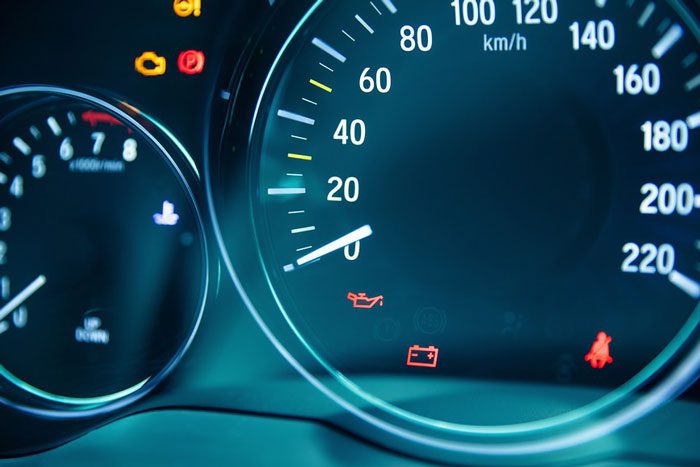
Don’t have a gauge to check your vehicle’s oil pressure? No biggie. Your car gives out plenty of hints; all you have to do is play detective. Let’s dive in.
Visual Inspection
It is time to do some visual inspections to check oil pressure without a gauge. Let’s see how to do that.
- The Case of the Mysterious Oil Leaks:
Have you ever noticed dark, oily spots where you park your car? That might be your ride marking its territory with oil leaks. If you spot these, your oil pressure could be acting up.
- Peek-a-Boo with the Oil Filter:
The oil filter can be a tattletale. It might be time for a change if it looks dirty, grimy, or way past its prime. A clogged filter can mess with your oil flow, and, yep, you guessed it, the pressure is increased.
What’s That Sound? Listening for Clues
Wondering where the sound is coming from? It may indicate your oil pressure.
- Tick-Tock, It’s Not a Clock:
If your engine starts sounding like a grandfather clock with ticking or knocking sounds, it’s probably not happy. These sounds can be an SOS signal from your car, pointing to potential oil pressure issues.
- Regular Sound Checks:
Getting to know your engine’s regular hum and rhythm is like understanding a favorite song. Once familiar with it, any odd beats (or knocks and ticks) will stand out. So, have a little listening session with your engine every now and then. So, if that happens, it may indicate your oil level is running low.
Checking the Oil Level With the Dipstick
The dipstick can be your sidekick in gauging oil health. Pull it out, wipe it, dip it back in, and see where the oil line hits. The dipstick must have two marks for minimum and maximum oil levels.
If it’s under the minimum mark, your oil pressure is suffering. If it’s too high, you might be dealing with overfilling, which isn’t great either.
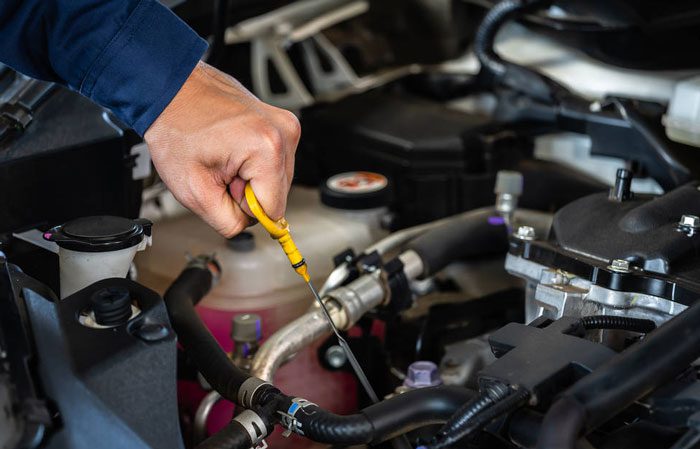
What to Do If Your Oil Pressure is Low?
If you notice that your car’s oil pressure gauge is reading lower than normal, it’s essential not to ignore it. Low oil pressure can be a sign of potential engine problems that, if left unattended, can lead to serious damage. Here’s what you should do:
- Look for Leaks: Examine the engine and the ground beneath your car for any signs of oil leaks. Leaks can lead to low oil pressure.
- Call for Assistance: If the oil level is fine and there are no obvious leaks, don’t try to diagnose the issue yourself. Call for a mechanic to inspect your vehicle. It’s better to be safe than sorry when it comes to engine problems.
Remember, low oil pressure is a warning sign, and addressing it promptly can save you from costly engine repairs in the long run.
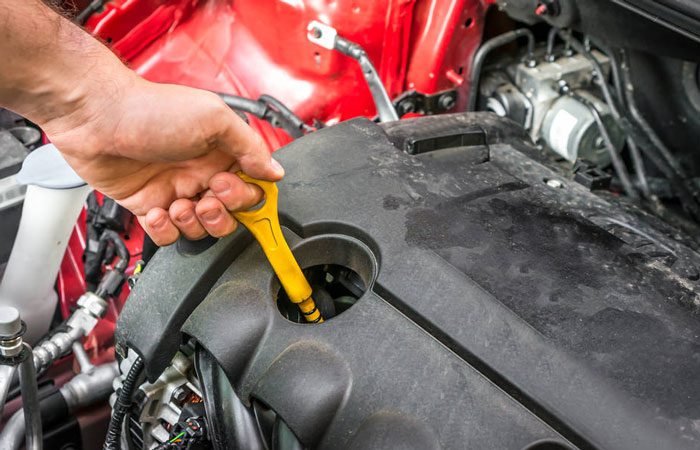
Preventative Measures
This research paper provides precautionary procedures for monitoring oil pressure in a vehicle. Exploring traditional and alternative methods when a gauge is unavailable to ensure engine health and peak performance.
Timely Oil Changes
Regular oil changes before your engine experiences a low oil level keep things clean and smooth inside the engine, ensuring optimal oil pressure. Think of it as giving your car a mini-wash day!
Picking the Perfect Oil
All oils are not made equal. Your car has preferences, just like you might prefer a latte over a cappuccino. Always ensure you’re pouring in the right oil grade for your vehicle. Check your owner’s manual if you’re unsure.
Spot Leaks & Damages Early
Inspect for any oil leaks or damages, especially after long drives or when you feel something’s off. Catching issues early can save you a world of hassle (and potentially money).
FAQs
Here are some of the most asked questions about how to check oil pressure with and without a gauge.
To acquire an accurate reading, the oil level should be checked either before starting the engine or 5 to 10 minutes after it has been turned off.
An engine’s oil pressure may be determined with the use of a device called an oil pressure sensor. When talking about sensors, the word “oil pressure sensor” may refer to either an oil pressure switch or an oil pressure sender.
Conclusion
We are concluding our discussion on how to check oil pressure with and without a gauge. It’s evident that maintaining the right oil pressure is more than just a routine check. It’s an integral part of ensuring your vehicle’s health and longevity.
Whether using sophisticated tools or simply relying on your senses, being proactive in monitoring and addressing potential issues is key.
Regular oil pressure checks ensure your car remains in peak condition, ready for the many adventures ahead. So, listen to your vehicle, be observant, and ensure it gets the care it deserves. Safe travels!

